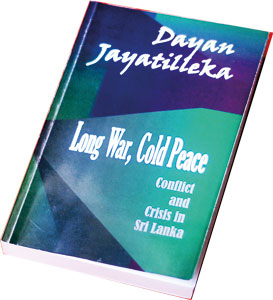–

S.Sivathasan
JR invited, Rajiv Gandhi invaded and Tamils paid the price. The cost of political unrealism at over 1,500 dead on either side was exacting. The invasion had a twin motive. To make the North safe for the TULF – read moderates friendly to India – and the South safe for the UNP – read a regime amenable to India. JR heaped victory on his country. The invitee was treated to ignominy by Tamil militants. It rankled in India’s mind from 1987 and most particularly since 1991 and was avenged in 2009. Lessons of the misadventure are not learnt yet by any of the parties complicit to it.
Firstly a brief look at the precursors to India’s intervention. Tamil militancy and the state military were reaching a point of a major collision. Events moved in quick succession in mid-1987. May of that year was rife with talk that the capture of Jaffna by the Sri Lankan military was in the offing. Either rumour or inspired leak had it, that execution of the plan would involve heavy casualties. Jaffna was gripped with fear. What lent credence to it was the feeling that the militants were not strong on ground and their ammunition supply was limited. The native intelligence of the Jaffna man helped in this discernment.
The Vadamaratchchi Operation launched on 26th May and the ease of capture in 4 days, confirmed the forebodings. Extension of the operation to reach the heart of Jaffna was therefore anticipated. The first three days of June saw movement of people going in all directions away from their homes with no clear idea where. News of the food convoy from India moving towards Jaffna was comforting to the Tamils. But that noon itself it was stopped at mid ocean by the SL Navy. Euphoria for the South and disappointment for the North were only for a while.
The following day a little before 5 pm, there was an unprecedented roar of low flying jets, fighter planes and cargo planes dropping food items. It was revealed subsequently and quite credibly that the air drop was scripted even before the food convoy set sail. Within minutes everybody figured out what it was all about. The youth lit crackers. Not a soul bothered to say food has come. No one stopped to debate the legality or otherwise of airspace violation. Their obsession was that SL army with air cover was going to honeycomb the Peninsula. This had now been foiled by India. They were ecstatic only about what the drop signified. INDIA IS COMING was their perception. This was enough to dispel all gloom.
The following morning, Thursday, I asked an officer working with me what his clairvoyant friend will say. He said that he had already met him who after prayers and meditation had said that “the next day – Friday, the army will get out of Pt. Pedro and march towards Jaffna. BUT midway, it will turn back and go, for reasons he was unable to know.” On Friday morning the army did break out. At Atchuvely much to the surprise of all Tamils it reversed course. This turning back is the now well-known handiwork of DN Dixit who was forceful enough to get New Delhi to intervene and stop any further advance beyond Atchuvely.
From this date after a seeming lull, there was a spate of activity among three groups. The Indian Government, Sri Lankan Government and the militants with civilians as spokesmen. To bring about some settlement and to avoid confrontation was the concern. As these went on, a few weeks later a food shipment arrived in KKS harbor. To receive it Mr. Hardeep Puri, Political Secretary was at the harbor. He was taken to Jaffna town in an open vehicle by the Tigers. On either side of the road there was a massive, happy and enthusiastic crowd, wanting to convey its gratitude. Again, not for food but for the prospect of INDIA COMING. In charge of arrangements were Tigers. The vehicle could only inch along. All the way he was profusely garlanded, feted and treated to food and drinks. It was a reception which is reserved for the rarest of personalities for an exceptional occasion. In an earlier time only Nehru could have got it. Now Puri had it. To Jaffna he symbolized India and honouring him was honouring India. The whole event was televised by local TV managed by Tigers. Such was the emotional bond between India and the Tamils at that time. The Tigers did their arrangements well, but it was clear that it was formal and ritualistic. Their heart was not in it.
The month of July saw again a flurry of engagements among India, Sri Lanka and the Tigers ending up with the Indo Lanka Accord in July 1987. The Tigers had no say about it, no hand in the draft and did not so much as have the occasion even to read it. Within an hour or two of it being signed, massive Antanovs and other planes flew continuously for two days or more. They ferried men and material from India to Palaly. Alongside, was the movement of SL troops to the south by air as well. Soon after, there was a formal handing over of weapons by the Tigers. Those who were knowledgeable were certain that it was a mere token of what they possessed.
To the war weary, there was peace in our time. To the percipient signs were ominous. From August1987, they were fueled by India’s proclivity to unsettle, not by error but by design. The relationship between India and Sri Lanka in the period 1977 to 1987 needs to be understood to fully discern developments at that time.
When JR won the elections in 1977 and became President in ’78, his alter ego Morarji Desai was Prime Minister of India. In 1980, Indira Gandhi unseated him scoring a resounding victory. This was irksome to JR who had earned her ill will and wrath. Ideological differences apart, there was personal antipathy and even temperamental incompatibility. He prided himself over the thought and made it public that he was of Nehru’s vintage. Implicitly, Indira was but a trifle. Can it go well with a lady of aristocratic lineage and bearing, who was styled by the West as Empress of India? She was a personality cast in the mould of Patel and not of Nehru. JR hated her and her hatred was no less. Once in the early eighties a friend of mine while talking to her in Delhi, said “Madam, JR hates India”. She leaned towards him and said “Me also”. It was such a leader of a great nation that JR had to deal with.
To a Prime Minister poised to deliver a lethal punitive blow, the 1983 pogrom against the Tamils provided the occasion. Even more important was the emergence of motivated Tamil militants straining for training in India. Tamil Nadu of the same ethnic identity was a suitable hinterland ready at hand. As factors moved favourably in Delhi’s calculation, Tamils had their own ideas that history would move as they wished. If India could be persuaded to the strategy of partition, then Cyprus Solution of the north for the Turks and south for the Greeks could be considered a precedent for the Sri Lankan situation. Whatever the viability of this thought, it lost its sheen with the demise of Indira Gandhi. There was little realization among Tamils that the world had moved much from Palmerstone’s Opium War against China, at the whim of the PM of England 130 years back. Such whimsical intervention was no longer possible. Partition became even less practicable without a fearless and resolute Indian leader. When an overnight change in strategy was required we harboured the same views from November 1984, ie after the death of IG, to October 1987 when war broke out.
Does history run its course as per some destiny or is the path altered by a powerful leader? This has been a dilemma for historians to interpret. Arthur Koestler invokes a picturesque analogy. A small stone is washed away by a river. Not so a boulder, which makes its impact for 200 yards or years. In recent times Napoleon, Bismarck, Lenin, Mao and Deng left their mark in altering world history. Nehru, Margaret Thatcher, Gorbachev and Lee Kwan Yew too made a striking contribution through their force of personality. In that line was Indira Gandhi as well among the great world leaders. The void created by her demise was well assessed by Sri Lanka’s political leadership and the sails were freshly set to gain direction. Distressingly the same did not hold with the Tamils and we floundered, yet fortified in the belief that when we are in a soup, either India or the International Community is obliged to retrieve us.
From late 1984, Tamils were caught up in a drift that lacked purposive direction. Indira’s reputed Advisor G. Parthasarathy was marginalized for no reason by Rajiv Gandhi, and he relinquished his duties. The respected and competent Foreign Secretary A P Venkataeshwaran, fully conversant with the Tamil problem was dropped unceremoniously. His predecessor was one Romesh Bhandari and he enjoyed the confidence only of President Jayawardena. His handiwork was the miserable Thimpu Talks in mid-1985, which took nobody anywhere. The objectives as discerned by Tamils were two. (1) Force march all militant groups to the conference table, thereby asserting India’s supremacy. (2) To cut V. Pirapakaran (VP) to size, proclaim that all the militants stand on an equal footing and to din into VP that he is not primus but all are pares. (No first but all are equals). By Christmas 1976, Tigers had eliminated all other groups and VP proclaimed that he was just primus and there were no pares. This was the only dismal effect of India’s efforts for two years.
By early 1987 VP’s stay in India had become untenable. When he asserted his independence increasingly, relations with his benefactor MGR soured. Can a chick remain till eternity under the wings of the mother? Will not an eaglet fly off from the cliff one day? When the day comes the baby kangaroo gets out of the pouch. When the hour struck, VP got out of Tamil Nadu and came over to Jaffna. From January to June Jaffna experienced constant warfare, aerial bombing, shelling, power outages and shortages of food. The people had braced themselves to circumstances however trying.
To connect with where I digressed, may I say some movement was observable now. After hectic activity in July 1987, VP was flown to Delhi under duress from Suthumalai Amman Temple premises by helicopter to Chennai and thence by plane to Delhi. Nothing was known as to why. It was only speculated that the trip may have something to do with an Accord. When VP did not return for more than two days there was agitation among the people and more among the cadres.
On his return a mammoth meeting was held at Suthumalai where VP read out a prepared speech. It then transpired that he was not given enough time even to read the contents. Wrath and determination to undo the so called Accord were explicit on his face at the event that was televised. If VP was not considered the leader and spokesman of the Tamils, why was he flown to Delhi in the first instance? If he was so considered, why this cavalier treatment? The implacable discord that came about, his spurning of the Accord, the violent incidents that followed, the outbreak of war with the Indian Army and consequent unfortunate happenings even after its withdrawal have their origin in this highbrow behavior of the Indian establishment in Delhi. India reaped the whirlwind.
Events that flowed subsequent to the Accord, cast unforgiving shadows and confirmed misgivings. Happenings seemed to flow in a well scripted coherent sequence. Very soon on display were India’s sinister intentions. From the rump of anti-Tiger elements resident in India, was cobbled together a rag tag called ‘Tri Star’. It was to serve as a fifth column for the Indian Army. What a way to keep peace and win over the people! Each time small batches landed on the Mannar coast, they were mowed down by the Tigers. News used to seep to the people immediately. In the book by Lt. Gen. SC Sardesh Pande, written with transparent honesty by an officer of character, there is reference to it. He speaks of VP losing credibility about India on this score. A war was coming became clear to the Tigers.
I do not use the acronym IPKF because it is a misnomer. Keeping the peace was not the mission of the Indian army. Peace between Tamil and Tamil? Between Muslim and Tamil? They were not at war. Then what was the justification to heap 60,000 troops or more within the confines of North-East? Why keep in and around the Jaffna fort alone, some 19 tanks? When war broke out on 10th October, did any rumble along to the Sinhala-Tamil border to keep ethnic peace if it was ever feared?
My adoration for all what was good and great about Tamil Nadu and of India, made me purblind to reality. In the early eighties a certain lady from Delhi used to come to SL. In 1984, about 12 of us had a meeting with her in Jaffna. Her patriotism was never in doubt. But she said all the Tamils she met wanted the Indian army to come. She continued, “I don’t know why they are saying that. The Indian army is as brutal as any in the world, if not more brutal”. A senior officer from India who spent nearly a month in November 1987 and who had had discussions with me told me “I am getting back next week and after that I will not return because the Indian army is behaving like an army of occupation.” My experience at close quarters from October 1987 to February 1990, knocked off the scales clouding my vision. Before that I wondered how Bangladesh could turn against India, her deliverer and benefactor. Now I knew why.












